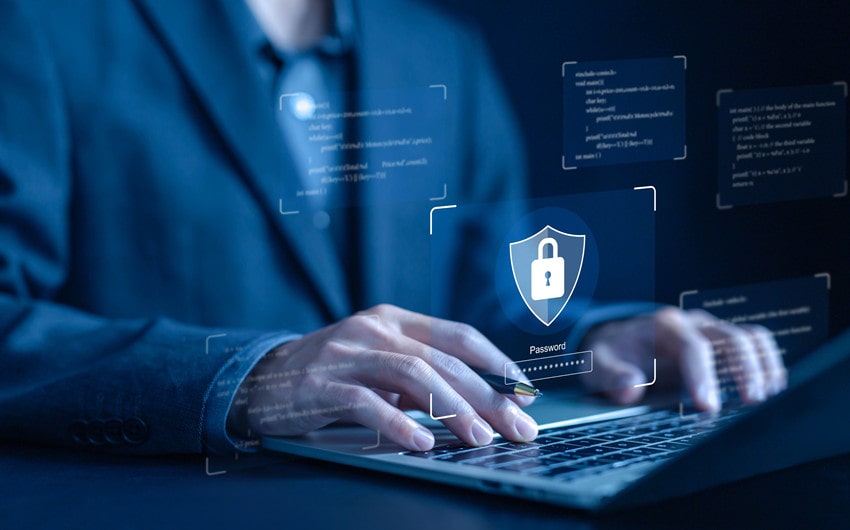Key Practices That Reduce the Risk of Hacking in Online Business
Modern online businesses face an ever-increasing threat of hacking and cyberattacks. Safeguarding sensitive client information and company data has never been as critical as it is now.
With hackers becoming more sophisticated in their methods, enterprises must adopt comprehensive security practices. This article delves into key strategies that businesses can implement to minimize the risk of hacking, ensuring both operational stability and customer trust.
Implement Multi-Factor Authentication
Multi-factor authentication (MFA) serves as a robust barrier against unauthorized access to accounts. MFA greatly improves security by demanding a second form of authentication in addition to a password.
This added layer typically involves a combination of something the user knows (like a password), something the user has (like a phone for an SMS or a dedicated app), and something the user is (biometric verification).
Implementing MFA can reduce the risk of hacking substantially, as even if a password becomes compromised, the hacker would still need the second form of verification to gain access.
Employee Training and Awareness Programs
Human error remains a leading cause of data breaches. Training employees to recognize potential threats significantly contributes to reducing hacking risks. Programs should include identification of phishing scams, safe browsing practices, and secure handling of sensitive information.
Encouraging employees to adopt good habits when it comes to cybersecurity is vital. People who want to know more about What is Cyber Attack protection tips should explore more online and attend workshops or online courses that focus on current trends in cybersecurity. A knowledgeable workforce serves as the frontline of defense against cyber threats.
To move beyond basic compliance, organizations should implement continuous, micro-learning modules that deliver bite-sized security lessons regularly, which is far more effective than an annual, forgettable training seminar.
Simulated phishing campaigns are an important tool, providing a safe environment for employees to practice identifying malicious emails and offering immediate, constructive feedback when they click a test link.
Fostering a “see something, say something” culture is critical, where employees are praised and not punished for reporting potential threats, even if they turn out to be false alarms.
Regular Software Updates and Patch Management
Keeping software up-to-date is a vital practice in preventing hacking attempts. Software providers continuously release updates and patches to fix vulnerabilities that hackers might exploit. Failing to implement these updates leaves a business open to attacks.
Enterprises should establish a routine schedule for checking and applying updates to their operating systems, applications, and antivirus software.
Regularly updated systems are less likely to be compromised, thus reducing risk. Employees should be trained to recognize update notifications and understand their importance to cyber hygiene.
Data Encryption Practices
Data encryption protects sensitive information by converting it into a coded format that only authorized parties can access. Implementing strong encryption protocols for data at rest and in transit is vital for securing valuable business information.
This practice helps maintain the confidentiality of sensitive data and ensures compliance with various regulations, such as GDPR. Businesses should regularly audit their encryption methods to identify potential weaknesses and improve their data security strategies.
A fundamental principle is to manage encryption keys with the same rigor as the data itself, using a dedicated key management service (KMS) to securely generate, store, and rotate keys, rather than embedding them in application code.
For data in transit, modern protocols like TLS 1.3 are non-negotiable, but for data at rest, enterprises should think about advanced standards like AES-256, which is currently considered virtually unbreakable by brute force.
The concept of “encryption by default” should be adopted, ensuring that all data, whether on company servers, in the cloud, or on employee devices, is automatically encrypted without requiring manual intervention.
Conduct Regular Security Audits and Assessments
Conducting regular security audits and assessments enables businesses to identify vulnerabilities before they can be exploited. These audits should involve comprehensive evaluations of systems, networks, and applications to ensure compliance with security protocols.
Companies can employ external experts to perform penetration testing, simulating an attack to pinpoint weaknesses.
Regular assessments provide valuable insights into current security practices and create a roadmap for improvement. Performing these evaluations frequently fosters a proactive approach to cybersecurity, helping mitigate future hacking risks.
Use Strong Password Policies
Establishing strong password policies is fundamental in enhancing online security for businesses. Employees should be required to create complex passwords that are not easily guessable. Strong passwords typically incorporate a mix of upper and lowercase letters, numbers, and special characters.
Businesses should enforce regular password changes and prohibit the reuse of previous passwords. Implementing a password management tool can further aid employees in maintaining strong passwords across different platforms. By collectively adhering to stringent password policies, businesses can significantly bolster their defenses against hacking attempts.
Adopting key practices to reduce the risk of hacking is vital for the longevity and success of online enterprises.
From implementing multi-factor authentication to enhancing employee training, every effort contributes to creating a robust cybersecurity framework. Maintaining a proactive approach toward cybersecurity ensures that businesses can safeguard data and protect their clients from potential breaches.







